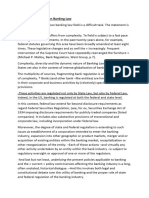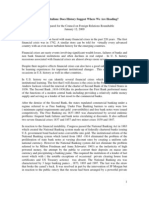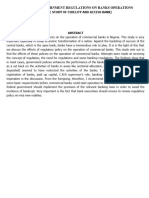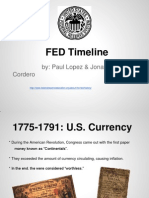Chapterone
1.0 Introduction
This chapter consists of the background of the study, problem statement,
research objectives,
research questions, significance of the study, And the scope of the study
1.1 bacground of study
in globally the commercial banking system in the 1830s until the crisis in the 1930s. Regulations
mainly seemed to follow the demands of the most powerful special interests and/or as ad hoc
solutions to upcoming problems. The period consisted of four different regulatory regimes where
the period 1864 to 1897 was the least discretionary and also seemed to be the most stable period.
The paper also highlights how seemingly small regulatory changes may have unanticipated
disruptive effects. In this case the ending of commercial bank note issuance made the central
bank over issue notes in its strife to supply liquidity. But as the central bank notes were base
money this led to an overall expansion of the banking sector. When representatives of the main
commercial banks were involved in the regulatory processes, they could use their pressure to
alter regulations which usually fed the booms further. On the other hand, the critics of
commercial banks instead managed to limit the business possibilities of the commercial banks
during the crisis in a way which instead amplified the effects of the crises further. The overall
lessons are that regulatory changes may well have effects not counted for and that discretion is
both more costly and more difficult to avid than what it seems (Anders Ögren, 2011)1
Anders Ögren. (2011). The Causes and Consequences of Banking Regulation. Paper prepared for the
CEPR PPP 4 Conference ,.



























































